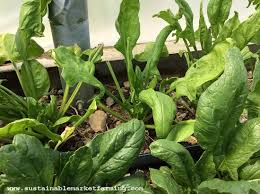Bolting in vegetable crops is a common problem for gardeners, especially during the summer months. Bolting occurs when plants undergo a rapid growth spurt to flower and set seeds before the vegetables are ready for harvest. This process often leads to bitter-tasting leaves, poor-quality produce, and sometimes, a total loss of the crop. However, bolting is a natural part of a plant’s lifecycle. It marks the transition from vegetative growth to reproduction, but it can be frustrating when it happens too early.
Understanding Bolting: Causes and Triggers
Lettuce is one of the most frequent culprits of bolting. It’s common to find lettuce plants rapidly stretching upwards, with flowers forming just days after you’ve planted them. The bitter taste that comes with bolting is caused by a buildup of compounds called sesquiterpene lactones, which plants produce to ward off pests like insects. This defensive mechanism ensures that the plant can produce seeds before it dies.
Several factors contribute to bolting, but the most significant one is day length. As daylight hours increase, many plants, including lettuce, cilantro, and bok choy, “sense” the longer days and start preparing to flower. Plants also react to heat and water stress. Cold-season crops like spinach and radishes don’t thrive in hot temperatures, and long spells of dry, hot weather can trigger them to bolt earlier than expected.

In contrast, some vegetables bolt in response to cold weather. For example, biennials like onions and carrots may prematurely flower if they experience a cold snap, signaling that it’s time to set seeds for the next season.
How to Prevent or Delay Bolting
- Choose Bolt-Resistant Varieties: Some vegetable varieties are bred to resist bolting. For example, Boltardy beets are specifically designed to avoid bolting. Opt for bolt-resistant varieties, especially for crops that are prone to bolting like lettuce, spinach, and arugula.
- Proper Timing of Sowing: For biennials like onions and carrots that are sensitive to cold, starting them in a greenhouse before transplanting them outdoors can help avoid exposure to cold snaps. For annual crops, sowing little and often ensures a steady supply of vegetables. This way, you can harvest before they become too mature and prone to bolting. For vegetables like bok choy, sowing after the summer solstice can help prevent premature bolting, as day lengths begin to shorten.
- Provide Shade for Cool-Season Crops: In hot climates, shading cool-season crops like lettuce and spinach is crucial. Plant these crops in the shadow of taller plants, such as pole beans or corn, or use shade cloth to protect them from excessive heat.
- Maintain Healthy Soil: Healthy, well-nourished soil promotes faster growth and resilience in plants. Ensure your soil has adequate nutrients and balanced moisture, particularly in warmer climates, where crops need to grow quickly before the heat sets in. Regular watering is essential, especially for crops like brassicas and cool-season vegetables.

What to Do if Plants Bolt
Sometimes, despite your best efforts, plants will bolt. If this happens, all is not lost. You can still salvage some edible parts of the plant. For instance, bolted lettuce leaves can be mixed into a salad, while root vegetables like carrots and beets can be used in stews. For plants like onions and leeks, you can cut around the hardened flower stem and still use the remaining usable parts.
Bolted vegetables can also be a boon for pollinators. The flowers provide an important food source for bees and other insects. In addition, these flowering plants can add beauty to your garden, with vibrant yellow blooms from brassicas or delicate carrot umbels resembling a floral arrangement.
By understanding what triggers bolting and taking proactive steps to manage your vegetable crops, you can enjoy a productive garden while minimizing the chances of losing your harvest to premature flowering.
